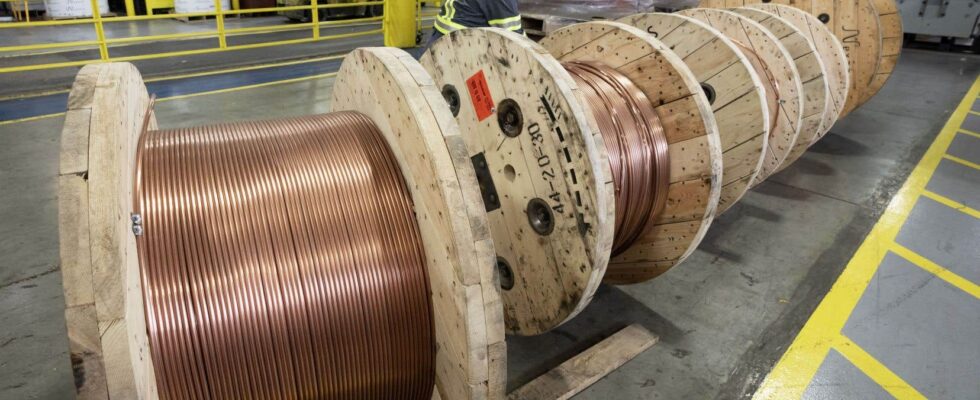The revenge of copper? At a time of energy transition, this once modest material is becoming more coveted than diamond or platinum. Its price is soaring to records and the red metal mines are the subject of bitter stock market battles.
Green demand also pushed the price of the metal to its all-time high on Monday, at $11,104.50 per tonne.
The Australian giant BHP, which is trying to buy its rival Anglo American, has made no secret of the fact that it is eyeing the Briton’s copper mines to form a global titan of the red metal.
Less flashy and far from the luxury sector, copper draws its nobility from its use for the energy transition: wiring of solar panels, wind turbines and energy storage solutions such as batteries for electric vehicles…
This booming demand is in addition to more traditional demand, for example in construction.
And production is struggling to keep up. “In a mining project today, to make 200,000 tonnes of copper, you need 10 billion dollars, and you will get it in 10 years,” underlines Philippe Chalmin, main coordinator of the Cyclope raw materials guide.
Between aging deposits, difficulties in discovering new mines, and ever more expensive extraction, it is not surprising that a giant like BHP prefers to buy a rival company with confirmed resources.
For Barbara Lambrecht, analyst at Commerzbank, “the now significantly higher price level could even stimulate production in the medium term”.
Peru’s Minister of Energy and Mines, Rómulo Mucho Mamani, declared in early May that the price of copper should attract investors and restore confidence in the industry, the financial press reported. Peru is the second largest copper producing country, behind Chile.
Dull platinum and diamonds
Conversely, BHP would ask Anglo American to part with its platinum assets in the event of a marriage and the Briton intends to do the same in any case.
Unlike copper, platinum is threatened by the transition to green energies. It is widely used in the production of catalytic converters helping to reduce harmful emissions from combustion engines.
Given the electrification of the automobile sector, its price has suffered over the last three years from forecasts of a future decline.
Anglo American, which has so far resisted the Australian’s advances even though it has agreed to negotiate for another week, announced last week a real big bang project, betting for its future on copper, but anticipating the split of several activities: platinum and diamonds.
This means shedding the famous De Beers company.
“The diamond is rather in crisis,” Philippe Chalmin told AFP, facing competition from synthetic stones.
The price of a lab-made diamond will typically be “60 to 85 percent lower than the price of a natural diamond of the same size and quality,” according to Queensmith, a jeweler based in Hatton Garden, London’s jewelry district. .
Without forgetting the ethical controversies surrounding “blood diamonds”, these precious stones having been used to finance conflicts in Africa, such as in Angola or Sierra Leone – they led to the creation of the international certification regime known as “Kimberley”.
De Beers “has lost its former strength, that is to say a quasi-monopoly in marketing”, affirms Philippe Chalmin, in particular because of competition from synthetic diamonds.
Result: the group had “a “very small” year, the worst in 25 years” except for the pandemic, we can read in the Cyclops report.
